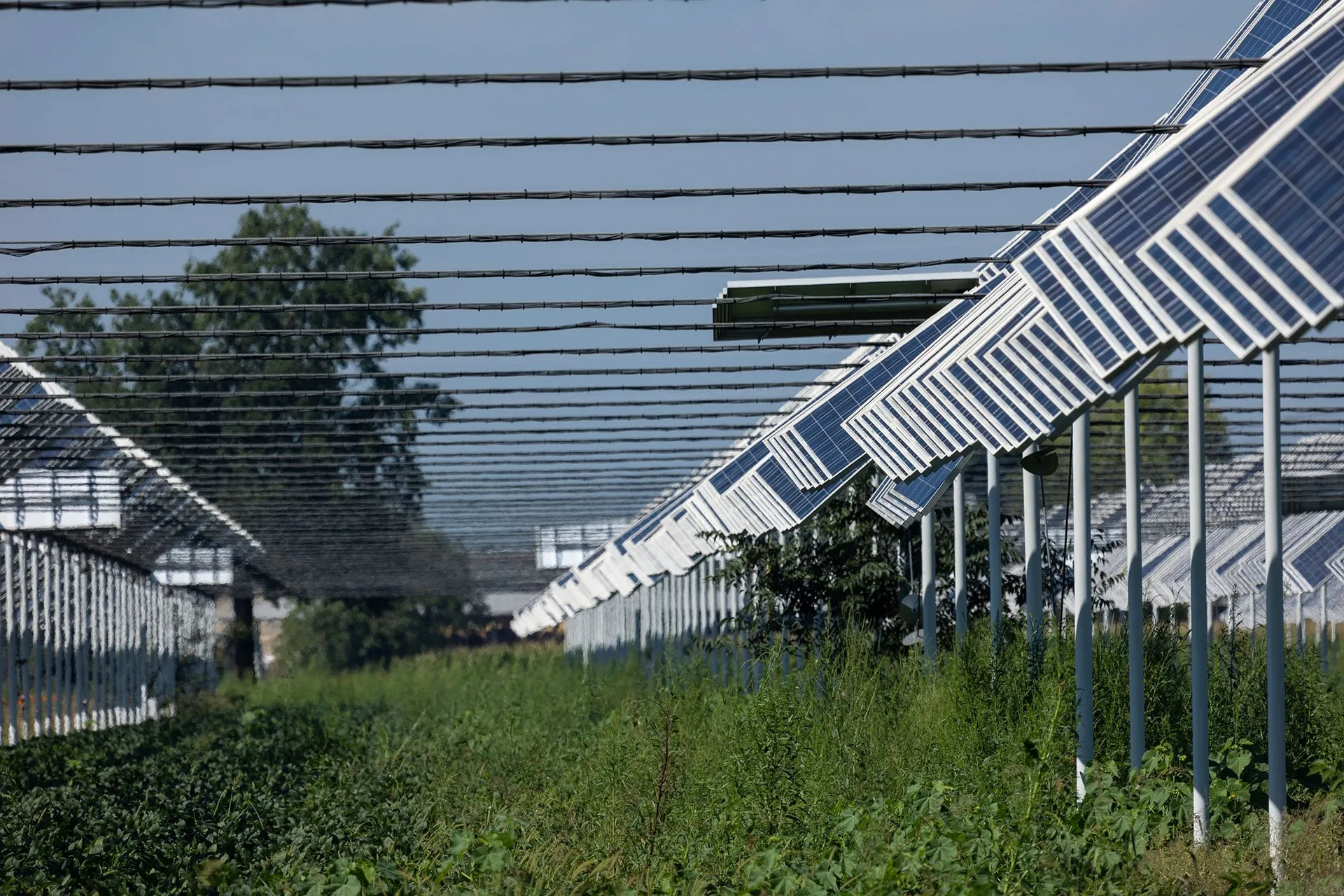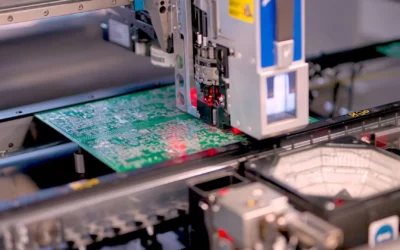Agrivoltaics: Synergies of Photovoltaics and Agriculture
The search for new forms of renewable energies, for ways to save and optimize production processes is a constant. One of the areas where synergies and ways to improve processes are being pursued is agriculture.
There is a growing dilemma between agriculture and the exploitation of sustainable resources such as solar panels. This is because available land is scarce and there is a need for both activities to be able to coexist or have space for it.
What is agrivoltaics?
The struggle to make land available for activities other than those traditionally used has led to dilemmas that have required creative solutions. It is precisely here that the concept of agrivoltaics arises. This is the combination of the activity of agriculture with the production of photovoltaic energy as part of renewable energies.
In this way, agrivoltaics allows both activities to coexist in a space and, not only that they can be developed occupying the same space, but also that there is a mutual benefit in the use of both models.
Renewable energies such as photovoltaic energy, can provide the necessary energy to crops or animal farms to be able to have a stable source of energy and that the land on which the photovoltaic plants are located (trackers, solar panels…) can be, in turn, cultivated in order to make the most of it.
With agrivoltaics not only a necessary balance is achieved in these lands, but also solar panels can protect crops from inclement weather such as hail, frost, and drought damage.
On the other hand, thanks to these photovoltaic plants it is possible to avoid wind and solar radiation on some crops, thus contributing to a better development and even water saving in agriculture. In this way, a complete environmental integration is achieved, which is very beneficial for both activities.
Beginnings of agrivoltaics
It is important to know the origin of this environmental integration that has led to the emergence of the concept of agrivoltaics. Over time, both agriculture and photovoltaic plants had the difficulty of being able to cultivate the land, but there was also a need to dedicate significant areas of land to produce photovoltaic energy.
Faced with this need, solutions were sought that would allow these two activities to coexist, finding synergies and points in common between the two. This is how the concept of agrivoltaics arose.
The origin of this problem is in Germany, which was one of the regions that first began to feel the problem of the lack of space and land to be able to develop these activities.
Approximately in 2017, the German applied research institute Fraunhofer (Fraunhofer Institute for Solar Energy Systems ISE) through its Chilean office made it clear that the combination of solar energy and agriculture brought significant benefits. To verify this, three photovoltaic plants were installed on agricultural crops in the metropolitan region of Santiago de Chile.
The aim of this demonstration was to help in the efficient use of land, stabilize the energy supply, incorporate smart technologies, and reduce the carbon footprint of agricultural products.
As a result of this research, very clear benefits were achieved in three areas. On the one hand, the shading of solar panels resulted in improved yields in agriculture. This is of particular interest for crops that can be stressed in the open.
The use of shaded areas is an important benefit for agriculture. In turn, it was found that the crops could cool the environment and generate greater efficiency in the operation of the photovoltaic panels, especially in warmer periods.
Opportunities in agriculture and the energy transition
These experiments, accompanied by further research, made it possible to validate the idea that complementing these two activities would provide significant benefits and opportunities for environmental integration and energy transition.
In the United States, the University of Arizona has also conducted studies on what would be the consequences of combining photovoltaics with agriculture.
Their research to improve energy efficiency has shown that in areas with solar panels there is less water evaporation and reduced plant stress levels.
This is because it is less hot in summer and less cold in winter.
What are the advantages?
It has been perfectly demonstrated that agriculture can provide many important advantages for achieving greater energy efficiency. In fact, Europe is promoting this dual use of land to benefit both activities, through A European Green Deal, which establishes measures to achieve environmental integration.
The main advantages of agrivoltaics are described next.
A good combination for some environments
Research has shown that some land is more likely to benefit from the combination of agriculture and photovoltaic panels. Croplands, grasslands, and wetlands are the most favorable environments for this combination to occur.
Not only can the panels greatly benefit crops in these areas, but in many cases these crops are best suited for better utilization of these PV panels.
Regulates the temperature
A great advantage of this type of combination is that the photovoltaic panels can regulate the temperature of the crops that are installed underneath. In this way, that the periods of high heat in summer the crops that are under the panels are kept at a lower temperature and in times of very cold temperatures in winter these crops end up having a higher temperature can be achieved.
Less stress for crops
Stressful situations occur in some crops when they are out in the open for long periods of time. This can be reduced or mitigated by photovoltaic installations.
Some of the crops that can be in this situation are beans, tomatoes, peppers, or green leafy plants such as lettuce, chard or kale.
The panels can reduce direct sunlight falling on the plants by up to 75%, making them grow much better.
Better performance of solar panels
Another great advantage of this union between agriculture and photovoltaic energy is that the photovoltaic panels encounter better conditions for energy production thanks to the crops.
Some of the aspects that influence this betterment of performance are high levels of sunshine, mild winds, moderate temperatures and low humidity conditions.
This combination makes these panels work much better in these crop areas and more energy can be obtained with less effort and less panel surface.
Synergies between photovoltaics and agriculture
As can be seen, the combination of photovoltaic energy and agriculture allows many synergies to be generated between both activities. These synergies undoubtedly affect crops and other environmental surroundings and other animals in the area.
One of the most important synergies that can be found in the development of sustainable energy from photovoltaic panels and crops would affect some insects such as bees.
The presence of pollinating bees in these crops seems that it could be a great advantage for these ecosystems. In fact, these plants could have an ecosystem that would favor the development of bee communities, thus also contributing to these bees being able to sustain themselves and generate larger colonies.
Planting crops that attract these pollinators could be an opportunity to achieve a greater balance in these ecosystems and further enhance the synergies that crops, and panels could generate in these agricultural lands.
Undoubtedly, the synergies and opportunities that agrivoltaics can bring to the lands of many countries or regions are a way to go. It is not only a question of agreement between those responsible for farms and those responsible for the production of renewable energies, but also the need for adequate regulation.
One of the aspects that is highlighted at European level and in many countries, is precisely that there is still no clear regulation that can control these activities and that could lead to new ways of working and promoting the enhancement of these synergies.
It can be concluded that this new activity, which has been developing for some time now, it is still in its initial stages and requires a higher level of development to achieve the expected environmental impact resulting from the combination of two activities that have a common objective: to protect the environment and benefit agricultural development and the production of renewable energies.
An activity that must continue to be promoted and that requires greater regulation and attention.
Suntrack® Smart Tracker Controller For Agrivoltaics
We have launched a specific solution to meet new Agrivoltaic standards- Suntrack® Green – Agritracker Control Unit, a solution to the challenges faced by tracker controllers used for regular tracking systems, this is especially challenging when trackers reach heights above 4 meters.
Suntrack® Agritracker Controller takes into account the maximization of crop performance and safety and its algorithms and functionalities are adapted for that purpose.






